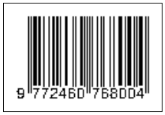Analisis Perkiraan TDOA menggunakan Algoritma LMS Adaptif pada Pelacakan Paus Lodan
Andriyan Permana(1*), Agfianto Eko Putra(2), Catur Atmaji(3)
(1)
(2) Jurusan Ilmu Komputer dan Elektronika, FMIPA UGM
(3) Jurusan Ilmu Komputer dan Elektronika, FMIPA UGM
(*) Corresponding Author
Abstract
TDOA estimation using Adaptive LMS algorithm was first published by Benesty [3]. The approach taken is based on estimation of the impulse responses from source to receivers. In the adaptive LMS algorithm function updates the coefficient with μ as adaptation step. TDOA values obtained from the difference between the two impulse responses.
From the results, values changing of μ affect the speed of TDOA estimation using the LMS adaptive algorithm. However, the wrong value of μ is lead to inaccurate sperm whale tracking results. The best value of μ for TDOA estimation using the LMS adaptive algorithm for sperm whale tracking is 0.01.
Keywords
Full Text:
PDFReferences
[1] Kandia, V., Dutoit, T., Stylianou, Y., 2008, Improve the accuracy of TDOA measurement using the Teager-Kaiser Energy operator, New Trends for Environmental Monitoring Using Passive Systems, 1-6.
[2] Kandia, V., Dutoit, T., Stylianou, Y., 2009, How can marine biologists track sperm whales in the oceans?, Dutoit, T., Marques, F., Applied Signal Processing A MATLAB - Based Proof of Concept, Springer Science+Business Media, New York.
[3] Benesty, J., 2000, Adaptive eigenvalue decomposition algorithm for passive acoustic source localization, Journal of the Acoustical Society of America, 107(1), 384–391.
[4] Kaiser, J.F., 1990, On a simple algorithm to calculate the “Energy” of a signal, Proceedings of the IEEE ICASSP, Albuquerque.
[5] Kandia, V. dan Stylianou, Y., 2005, Detection of creak clicks of sperm whales in low SNR conditions, CD Proceedings of the IEEE Oceans, Brest.
Article Metrics
Refbacks
- There are currently no refbacks.
Copyright (c) 2015 IJEIS - Indonesian Journal of Electronics and Instrumentation Systems

This work is licensed under a Creative Commons Attribution-ShareAlike 4.0 International License.
View My Stats1







